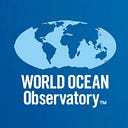Legacy Plastic
Deteriorated plastic waste has invaded our waterways, our oceans and our bodies. Can it be reversed? Are we even trying?
by Peter Neill, World Ocean Observatory
A recent article written by Charlotte Stevenson, a freelance science writer, set me back as good science reporting does, by its examination of a familiar issue. Ms. Stevenson reports on two academic papers, published in 2021, by researchers at the Utah State University and Cornell, Dalhousie University in Canada, and Strathclyde University in Scotland, that together amplify our knowledge of the impact of plastic waste deteriorated by sunlight and abrasion into microplastic particles, that descend into the water column and to the ocean floor and are ingested and incorporated into marine plants and species that in turn are harvested and ingested by humans and find their way into our bodies and our landside systems as invasive and dangerous, as an insidious return of plastic from its first landside use, deposited as waste in our rivers and oceans, and then, even as nano-plastic, to enter our bodies again as a tertiary threat to our health and welfare.
Here are some statistics, extracted from the reports, cited by Ms. Stevenson:
- That the research suggests we consume 39 to 52,000 pieces of microplastic a year, evidence found in our lungs, the human placenta, in our digestive tracts and other organs, and are being investigated for possible negative impact on our immune, reproductive, and neural development systems, particularly in children;
- That microplastic particles, as dust, are swept up from the ocean surface, lifted by sea spray and bubbles into the atmosphere and distributed by prevailing winds to be deposited on mountaintops, to settle and be carried downstream through densities of human population back to the ocean to circulate again and perpetuate the dangerous cycle;
- That research models suggest that of the immense amount of plastic waste we continue to discard into our waterways and ocean, almost twice as much is returning to the continents as micro-plastic dust and is deposited from the continents into the sea;
- That this circular distribution, driven by decades of plastic waste, now recycled back into civilization and exacerbated by our continuing disposal of plastics today, estimated to triple by 2040, is the consequence of decades of previous discard, coupled to indifferent and inadequate response to a problem known, represents “legacy pollution,” a phenomenon almost impossible to reverse.
We have all seen photographs of the Great Pacific garbage patch, the massive area where the ocean surface and top of the water column is a colorful accumulation of plastic detritus, a sluggish plastic soup; we have all seen films of rivers flowing with a torrential steam of plastic sludge down through villages dependent on that river for drinking water, cooking, irrigation, and sanitation. That is bad enough, but it is what we cannot see that is so fundamentally disturbing — plastic dust, circulating in the atmosphere, seeding ice crystals, making clouds and storms, drifting unknown through the air we breathe as a kind of toxic smoke, inhaled, subsumed into our physical and social structures, affecting climate conditions that further intensify the ongoing consequence of our patterns of consumption and waste, in an endless cycle of invisible effect.
What will it take? Are we beyond the point where even if we never made another piece of plastic again, if we abandoned all the utilities and dependencies we have created around plastic into all aspects of our manufacture and packaging; if we transformed that need by and into alternative production and process, are we able ever to be free of the damage plastic has already done to society worldwide?
Can it be reversed? Are we trying? When I read that our plastic waste will triple in 20 years, even as we realize the damage already done, frankly I despair. Over the last few days, I have conducted an informal study of my personal use of plastic and I see how hard this will be to change. I think about the researchers, what the science reveals, and I applaud them and Charlotte Stevenson for telling the story. But will we pay attention? Can we wean ourselves from plastic? Will we have the resolve, this year, to interrupt the cycle if only to begin to delimit what we have done? We can confront pandemic with a global initiative to develop and deliver vaccines to protect ourselves from microscopic disease with mortal consequence. Is nano-plastic any different? Can we take simple action to immunize ourselves from plastic, seen now for what it is: a plague upon us?
PETER NEILL is founder and director of the World Ocean Observatory, a web-based place of exchange for information and educational services about the health of the world ocean. He is also host of World Ocean Radio, upon which this blog is inspired. World Ocean Radio celebrates 12 years this year, with more than 600 episodes produced to date.
